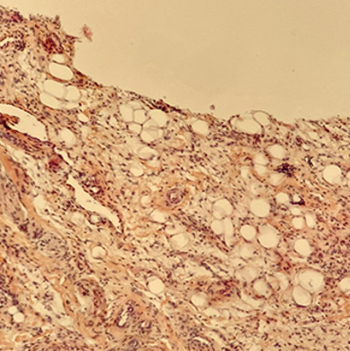Keywords
Intensive care unit, Quincke’s disease, acute respiratory distress syndrome, macroglossia, prone positioning
Abstract
Critically ill patients admitted into the intensive care units are susceptible to a wide array of complications that can be life-threatening, or lead to long-term complications. Some complications are inherent to the patient’s condition and others are related to therapeutics or care procedure. The prolonged prone positioning and mechanical ventilation devices are the first risk factors for orofacial complications. We report the case of a 47-year-old male patient, with a history of sleep apnoea syndrome, morbid obesity (body mass index of 43 kg/m2), and gastroesophageal reflux disease, presented to the emergency department with recent otorhinolaryngological symptoms of dysphonia and exertional dyspnoea lasting two days, and complicated with Quincke’s disease. First-line treatment consisted of a compilation of intravenous antihistamines and corticosteroids. The patient’s condition worsened. He developed an acute respiratory distress syndrome secondary to ventilator-acquired pneumonia with prone positioning ventilation, complicated by severe macroglossia. Soaked gauze dressings were placed around his tongue. Progressively, the size of his tongue reduced.
References

Views: 306
HTML downloads: 68
PDF downloads: 288
Published:
2022-08-24
Issue:
2022: Vol 9 No 8
(view)










